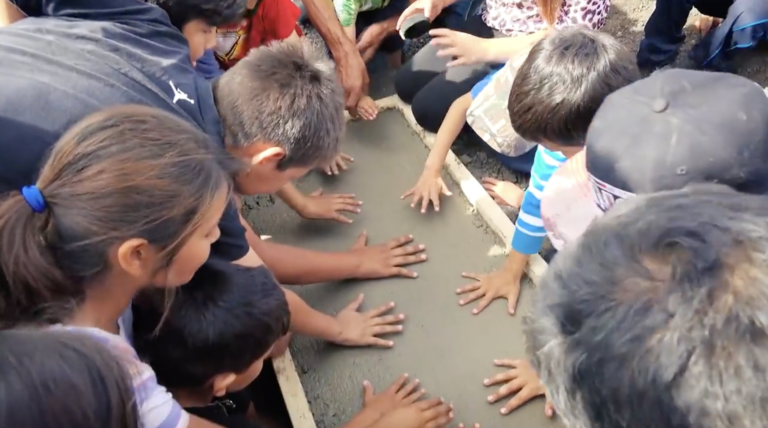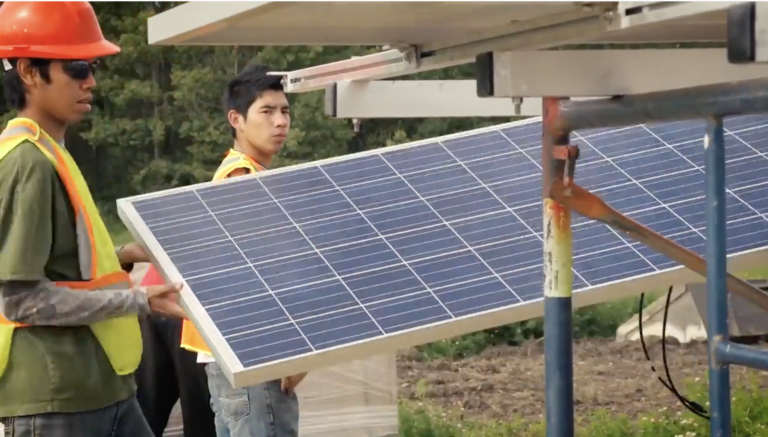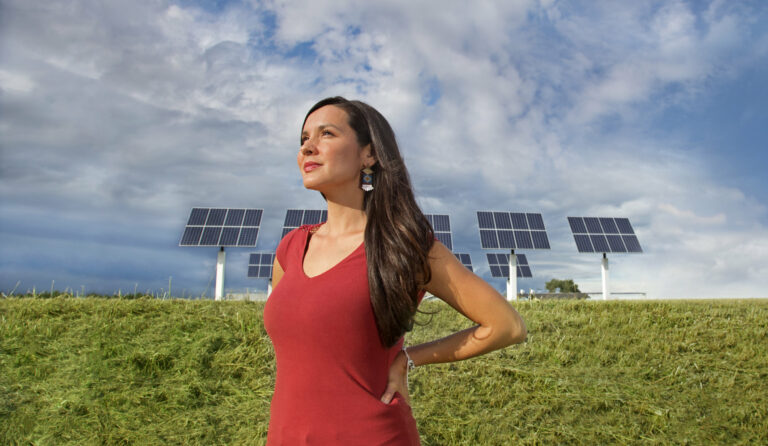WE ARE IN THE MIDST OF THE TRANSITION, AND INDIGENOUS NATIONS AND COMMUNITIES ARE THE ONES LEADING IT.
You can read more about the Piitapan Project and the work Sacred Earth Solar does on their website here

“The Coming of the Dawn”
For Indigenous communities across Turtle Island, access to energy has historically been linked to their colonial oppression. In choosing to challenge this, communities learned directly from the wisdom of communities about their need for Indigenous self-determination, inclusion, and the protection of Indigenous rights, knowledge, sovereignty, and leadership for a Just Energy Transition.
In 2011 the Lubicon Cree community dealt with one of the largest oil spills in Alberta’s history. After dealing with three decades of intensive oil, gas, logging, fracking, and tar sands exploitation the community chose to turn to solar.
Following the detrimental impact fossil fuel extraction had on the community, they decided to advocate for ownership over their energy, resulting in training and educating community members in installation and maintenance.

The Piitapan project was set up by the Lubicon Cree Community and Sacred Earth Solar in 2015 to power the community health centre. In the heart of the Tar Sands, fossil fuels were failing the Lubicon Cree so they turned to the power of the sun. They installed 80 solar panels, totaling 20.8 kilowatts on a pole-mounted system, any excess energy generated from the system goes back into the grid. This project involved the entire community, it provided training, reduced reliance on fossil fuels, and strengthened their independence.
Several steps were taken to establish the project:
- Community Visioning
- Identifying project location
- Environmental and cultural assessment
- Interconnection application
- Design and engineering
- Financing, construction, and fundraising.
- Operation and maintenance

“One of the challenges with coordinating a large project was bringing solar equipment into the community. Many vendors told them that Little Buffalo was in a ‘beyond recognizable zone’ so it took time (and patience) to arrange the delivery of eighty solar panels, two separate racking systems, inverters, heavy electrical cables, and 10 steel beams that weighed close to a 1,000 pounds each.”
Melina Laboucan-Massimo, Project Organiser, Lubicon Cree

Community engagement and relationships were vital throughout the process. Through building capacity energy sovereignty was strengthened.
Lessons Learnt:
- Indigenous voices must be meaningfully included in energy policy decision-making.
- Energy policy must be equitable and reflect the lived realities faced by Indigenous communities.
“This project maters to us because it represents who we are and where we are going in the future. When you see the work you, can say that I did that, I took part, and I did it right. A lot of people will see it everyday and I can tell people I worked on this.”
Karlton Sawan, Lubicon Cree

